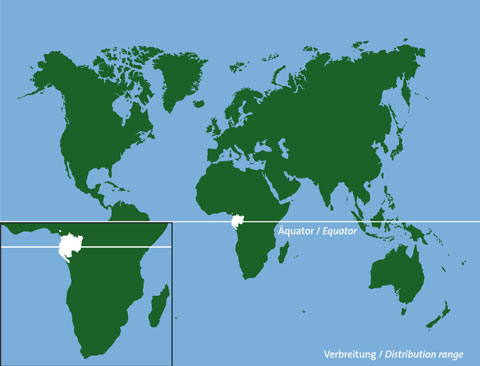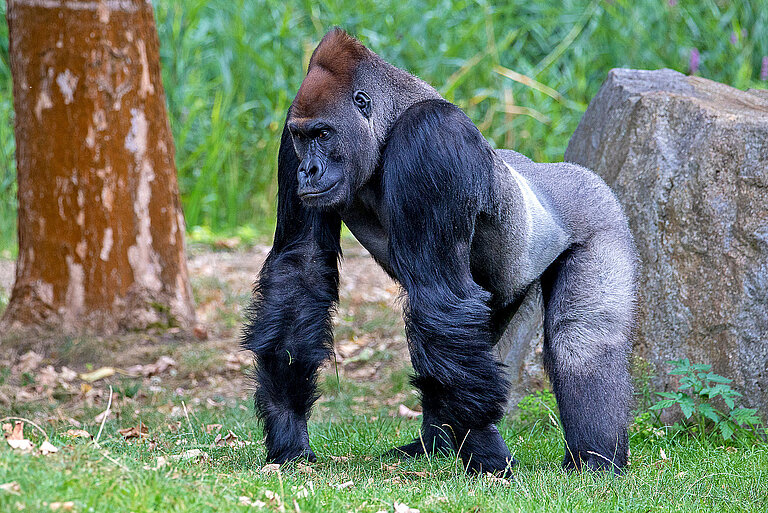Did you know?
The gorilla is the largest and heaviest of the great apes. Western lowland gorillas occupy the West-African lowlands and the mountain forests of the equator from Nigeria to the western part of the Congo.
Despite their enormous strength gorillas are gentle creatures which are only dangerous when threatened. They forage in family-like groups led by a mature silverback, often covering up to three kilometres per day in search of food. They do not defend specific territories. Every night they build new sleeping nests on the ground or in trees. As herbivores their preferred diet consists of fruit, leaves, shoots and flowers, although insects are also occasionally on the menu. Gorillas can reach the age of 50 or even older.
European Endangered species Program
This animal is managed by the European Association of Zoos and Aquaria (EAZA) under the European Endangered species Program.

today's feeding / commenting
01:30 PM,
03:30 PM
Characteristics
| Classification | Order: primates, family: hominids / great apes |
|---|---|
| Diet | Plants, shoots, stems, leaves, herbs, grasses, bark, fruits and occasionally also insects |
| Habitat | Lowland rainforests in West Africa |
| Reproduction | Gestation period: 234–288 days, one offspring; suckling period: at least two years; sexual maturity at 6–7 years; maximum life span: over 53 years |
Status according to Red List
More information you will get on the web page of the IUCN Red List.











